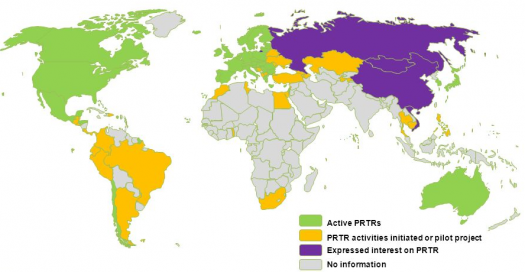30-Year Anniversary of the TRI Program Slideshow
October 17, 2016 marked the 30th anniversary of the Toxics Release Inventory (TRI) Program's creation under the Emergency Planning and Community Right-to-Know Act (EPCRA). Over that time, the quantities of releases reported to the TRI Program have changed as various aspects of the program have evolved, including the number of chemicals included on the list of reportable chemicals and the types of industry sectors required to comply with TRI reporting. The slideshow below demonstrates how releases have changed over the years, and includes information about significant milestones in the history of the TRI Program.
Read more about the 30th anniversary of the TRI Program.
30-Year Anniversary Slideshow
Hover over the chart to pause, or use the arrows to navigate through the years. Red boxes indicate changes to TRI reporting requirements, whereas blue boxes indicate changes to the technology used to support TRI reporting and analysis.
TRI's Influence around the World
Since its beginnings 30 years ago, the TRI Program has influenced the development of other similar Pollutant Release and Transfer Register (PRTR) programs. Currently, at least 50 countries have fully established PRTRs or have implemented pilot programs, as shown in the map below. More are expected to be developed over the coming years, particularly in Central and South American countries.
Source: United Nations Economic Commission for Europe, 2016
Read more about the TRI Around the World.
This page was published in January 2017 and uses the 2015 TRI National Analysis dataset made public in TRI Explorer in October 2016.
